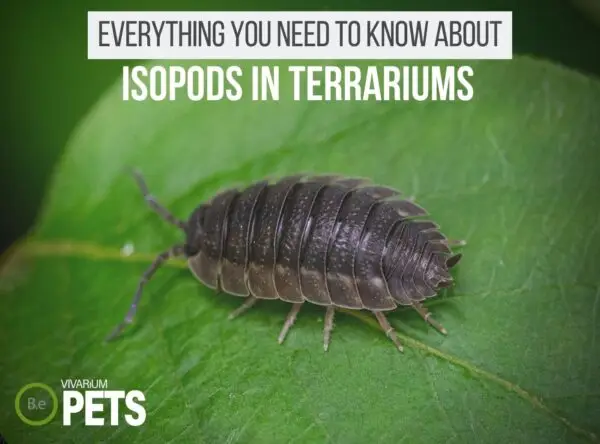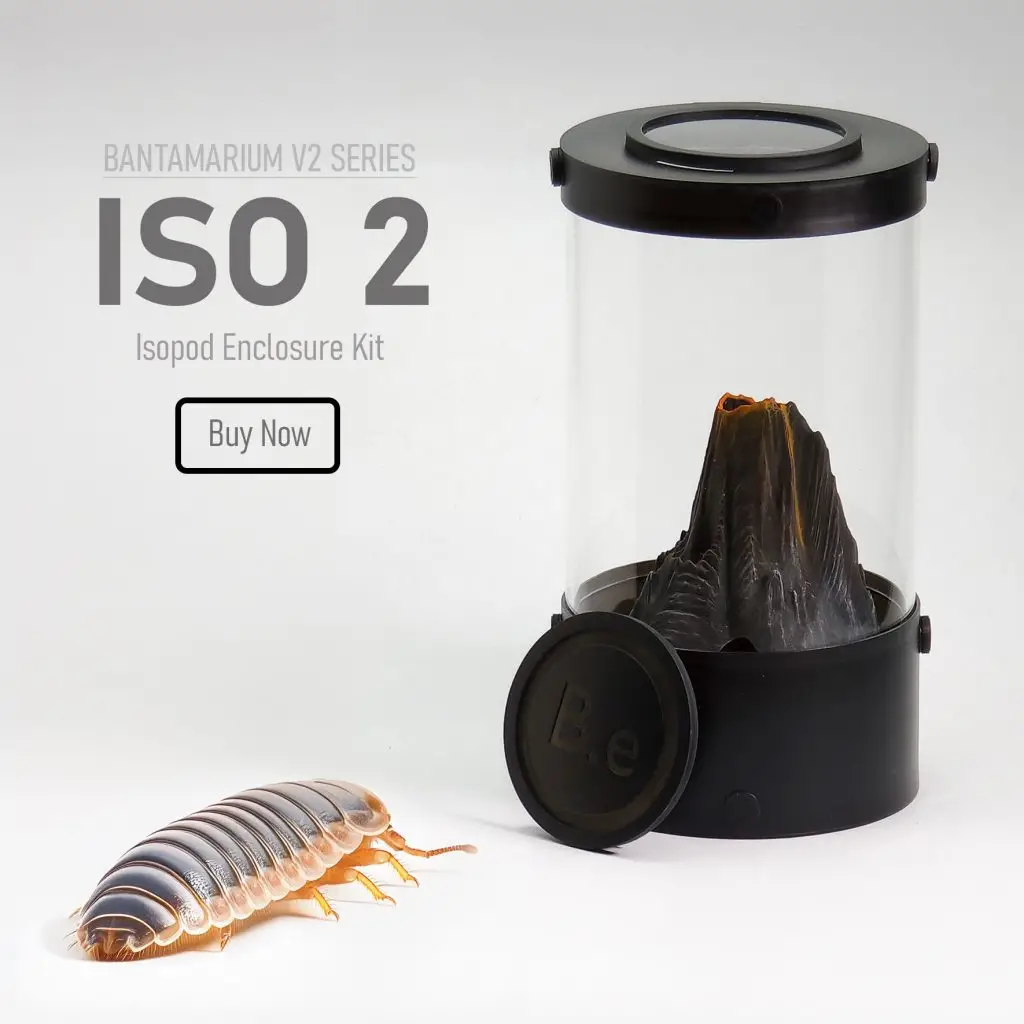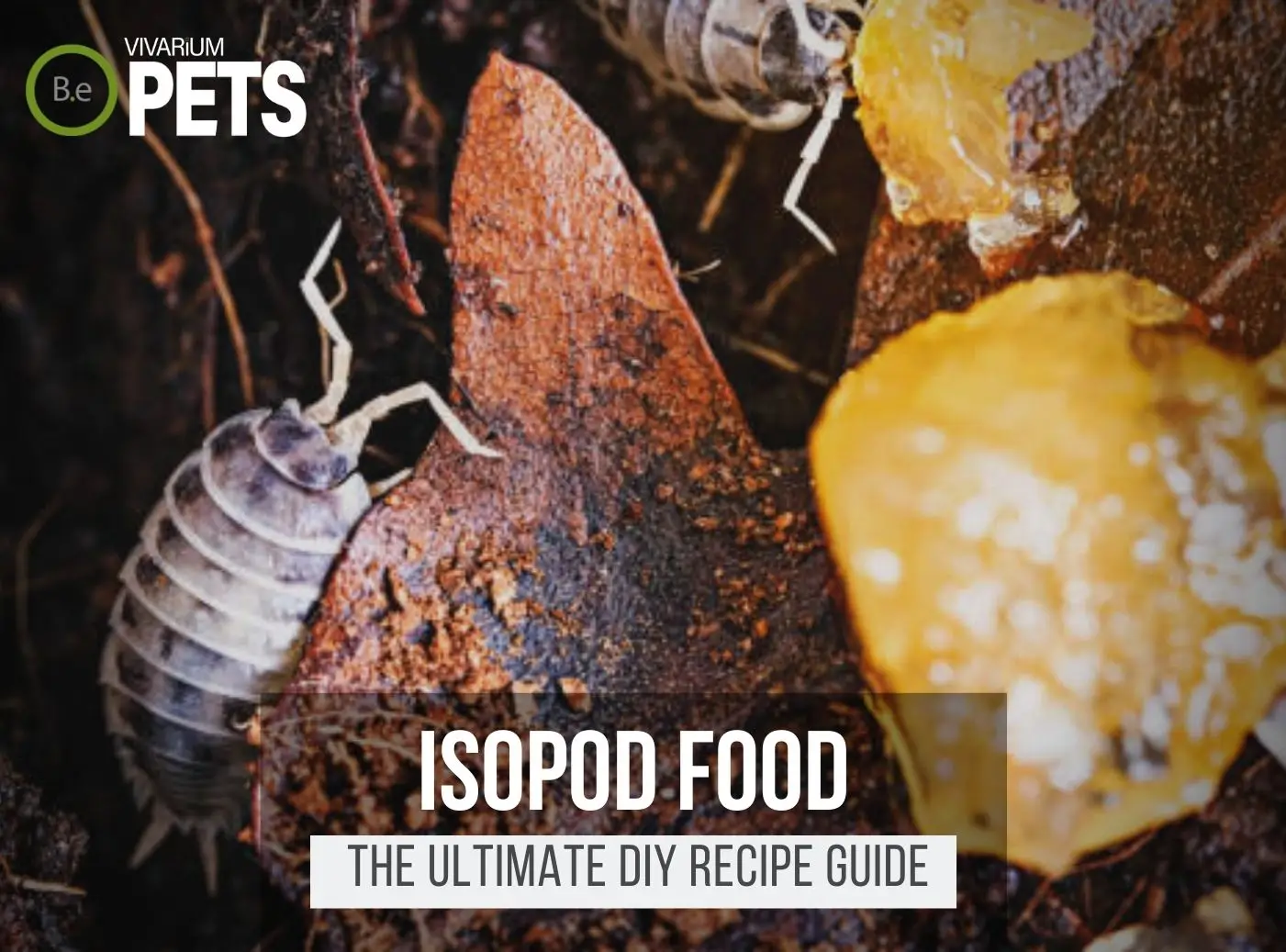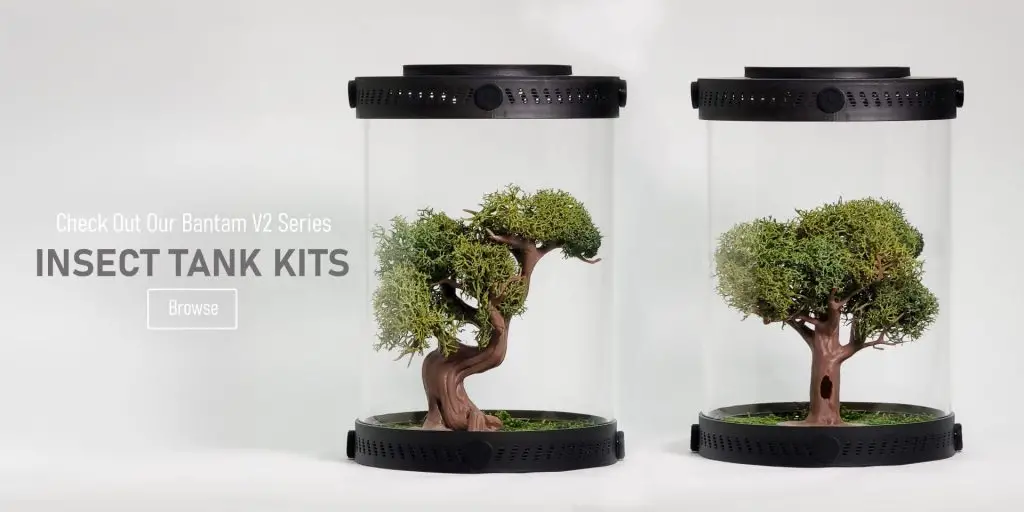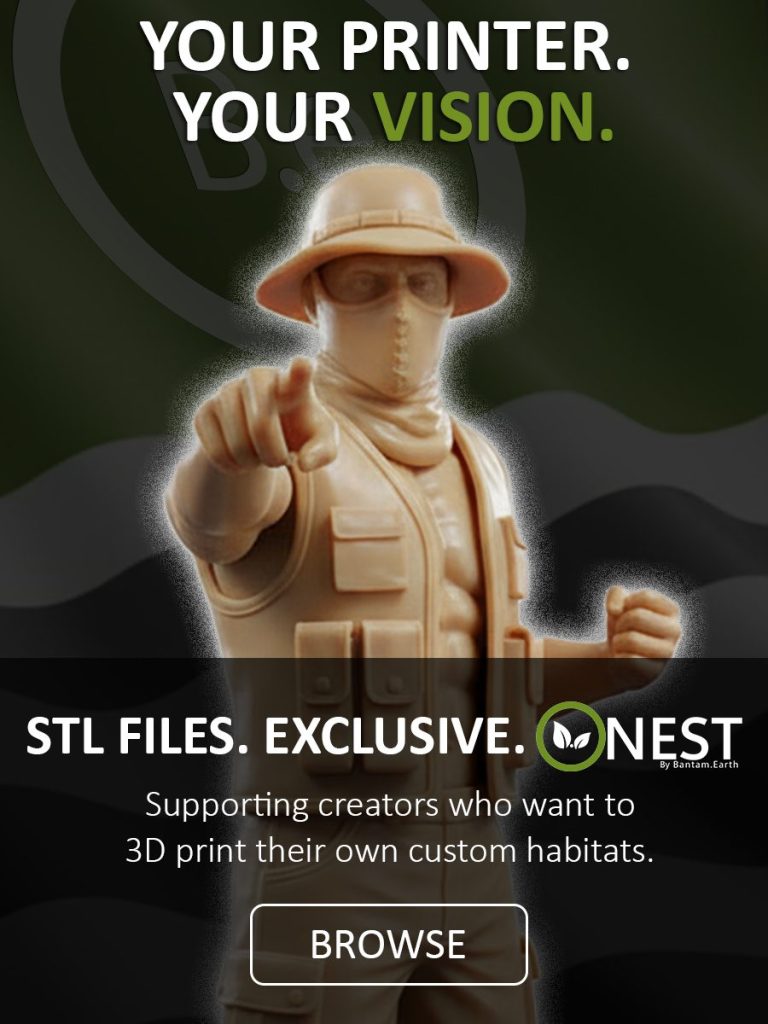Are you looking for a fascinating and small exotic pet to add to your collection? Look no further than pet isopods!
These tiny creatures are often referred to as woodlouse amongst many other names. They are easy to care for and come in a variety of colors and patterns.
In this article, we’ll explore the different types of isopods that can be kept in a vivarium, as well as how to care for them and set up the perfect miniature ecosystem.
Whether you’re a seasoned pet owner or new to the world of terrarium pets, you won’t want to miss this guide to pet isopods!
Table Of Contents:
ToggleBest Pet Isopods For Terrariums
Pet isopods are becoming increasingly popular as unique and fascinating companions for bioactive terrariums. Many different types of isopods can be kept just as pets in these types of vivariums.
Some of the most popular isopods for terrariums include the species Cubaris, Armadillidium, and Porcellio.
This array of tiny creatures comes in a variety of colors, sizes, and patterns, giving you lots of options to consider for your tank.
In the following sections, we’ll take a closer look at each of these species and explore their unique characteristics and care requirements.
Create the perfect home for your isopods with our Customizable Isopod Terrarium Kits, designed to meet all their habitat needs.
Cubaris Isopods
Cubaris Isopods are amongst the most expensive types of isopods one could acquire. To many hobbyists, they are considered the “creme of the crop” for exotic bug keeping.
One of the most notable characteristics of this species is the duck-like face they exhibit. It’s even hard for people suffering from Entomophobia to deny the adorableness of Cubaris isopods.
They also come in a variety of colors and patterns, including black, white, orange, and blue.
Furthermore, Cubaris species have lower reproduction rates and higher lifespans than other genera of isopod.
So they are considered rare by many hobbyists due to the lower breeding rates.
Click on one of the images below to see the isopod’s specific care requirements:


Amber Isopods (Cubaris sp.)


Cappuccino Isopods (Cubaris sp.)
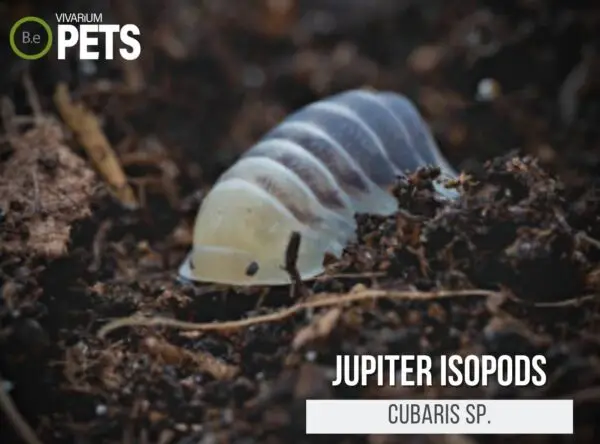

Jupiter Isopods (Cubaris sp.)
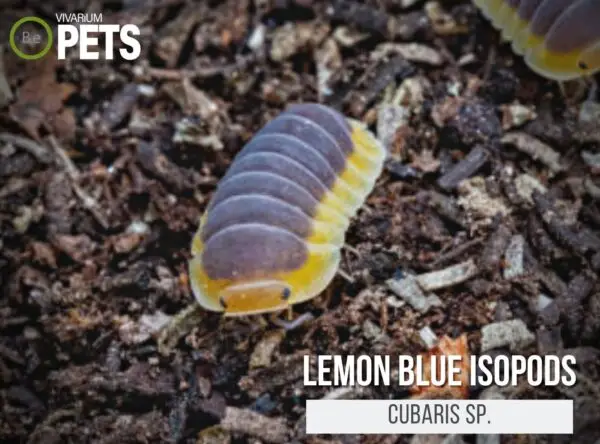

Lemon Blue Isopods (Cubaris sp.)


Little Sea Isopods (Cubaris murina)


Panda King Isopods (Cubaris sp.)


Pink Papaya Isopods (Cubaris murina)
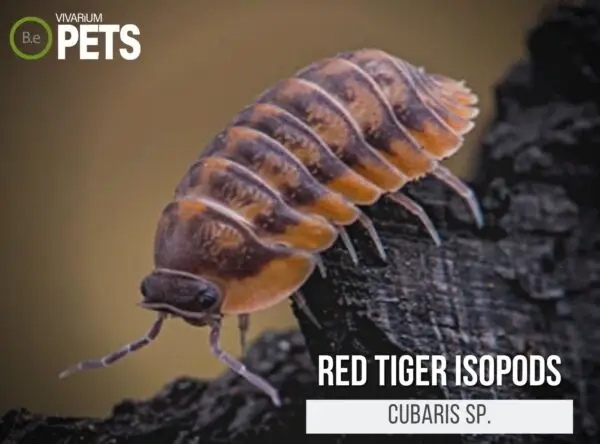

Red Tiger Isopods (Cubaris sp.)


Rubber Ducky Isopods (Cubaris sp.)
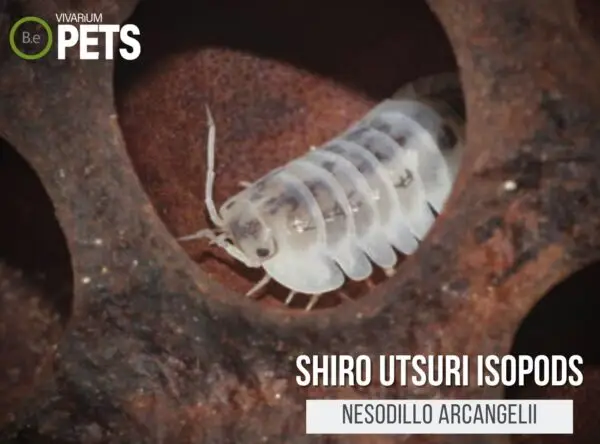

Shiro Utsuri Isopod (Nesodillo arcangelii)
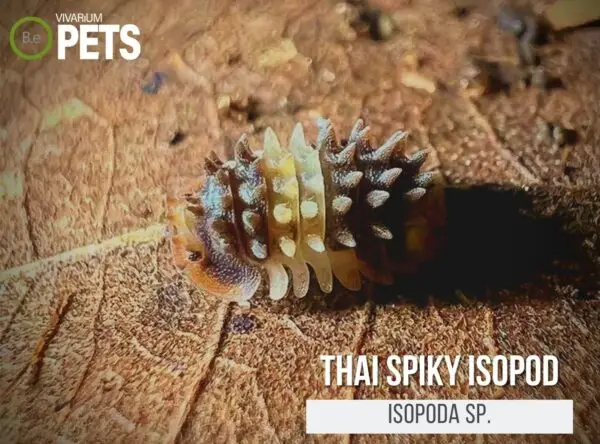

Thai Spiky Isopod (Isopoda sp.)
Armadillidium Isopods
Armadillidium Isopods, also known as pill bugs are amongst the most common type of isopod found around the world.
These are what usually come to mind when someone refers to woodlouse or common isopods.
One of the most notable characteristics of this species is its ability to curl up into a ball as a form of defense from predators.
We used to call these isopods “roly-polies” as a kid growing up.
Even though this species of woodlouse is very common, there are a variety of color mutations that are considered rare and will easily rival some Cubaris isopods on the expensive end.
Furthermore, most Armadillidium species have a higher reproduction rate when compared to other genera of isopods.
Click on one of the images below to see the isopod’s specific care requirements:


Clown Isopods (Armadillidium klugii)
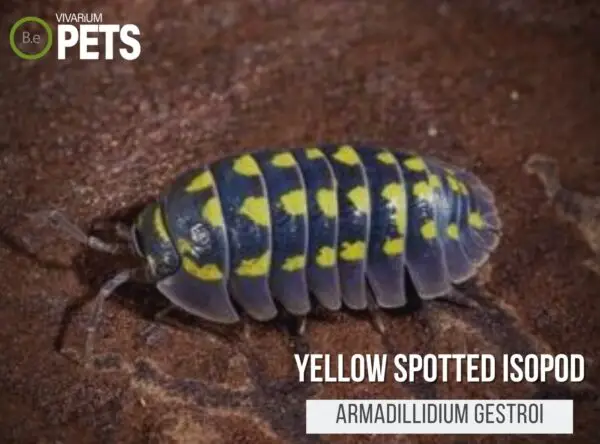

High Yellow Spotted Isopods (Armadillidium gestroi)


Magic Potion Isopods (Armadillidium vulgare ‘Magic Potion’)
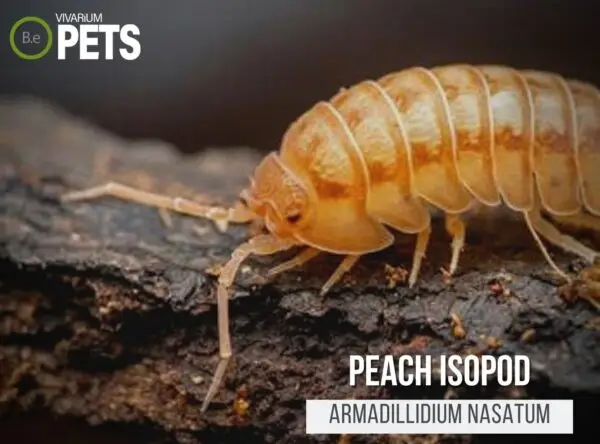

Peach Isopods (Armadillidium nasatum)
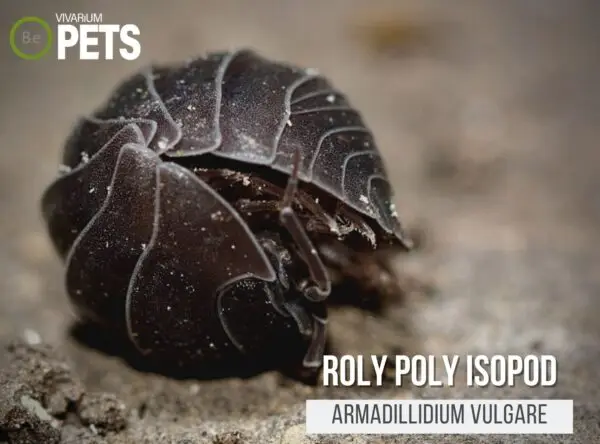

Pill Bug (Armadillidium vulgare)


Yellow Spanish Isopod (Armadillidium granulatum)
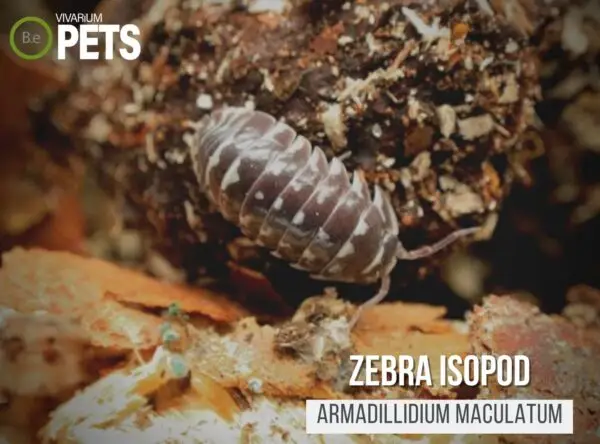

Zebra Isopods (Armadillidium maculatum)
Porcellio Isopods
Porcellio Isopods, also known as sow bugs are also a common woodlouse to find in gardens around the world.
These isopods are arguably the most popular bugs traded within the hobby and come in a diverse catalog of mutations.
One of the most notable characteristics of this species is its vibrant charisma inside and out.
Porcellio isopods are known to be very active throughout the day unlike many of their nocturnal relatives. They are also known to produce some of the largest isopods within the genus.
Reproduction rates, lifespan, and care requirements will vary widely depending on the specific mutation of the sow bug you are considering.
Click on one of the images below to see the isopod’s specific care requirements:


Common Rough Woodlouse (Porcellio scaber)


Dairy Cow Isopods (Porcellio laevis)


Dalmatian Isopods (Porcellio scaber ‘Dalmatian’)
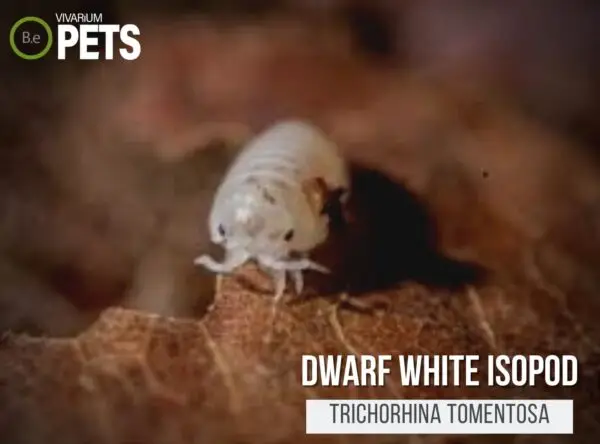

Dwarf White Isopods (Trichorhina tomentosa)


Giant Canyon Isopods (Porcellio dilatatus)


Giant Spanish Isopod (Porcellio expansus)


Lava Isopods (Porcellio Scaber ‘Lava’)
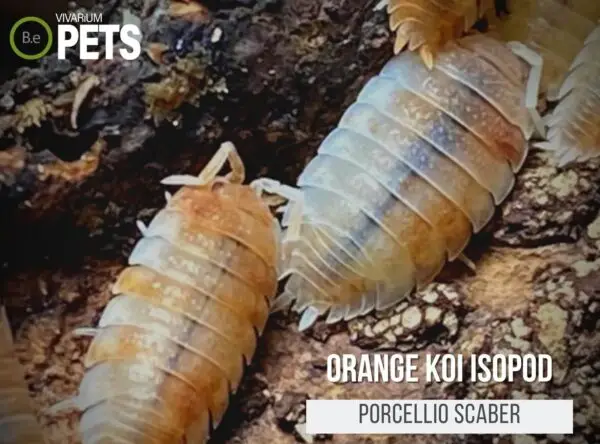

Orange Koi Isopods (Porcellio scaber ‘Orange Koi’)


Powder Blue Isopods (Porcellionides pruinosus ‘Powder Blue’)


Powder Orange Isopods (Porcellionides pruinosus ‘Powder Orange’)
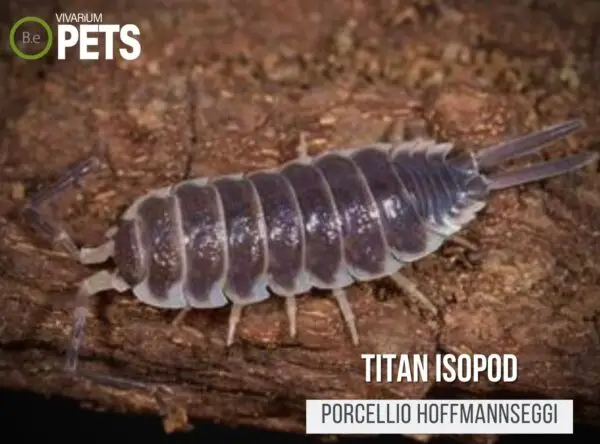

Titan Isopod (Porcellio hoffmannseggi)


Werneri isopods (Porcellio Werneri)
Best Type Of Isopod Terrariums
Isopods are fascinating creatures that require a specific type of environment to thrive. When it comes to creating an isopod terrarium, there are a few things to keep in mind.
First, it’s important to choose a terrarium that is large enough to accommodate your specific isopod species and their needs. A 10-gallon tank is a good starting point for most species.
Second, you’ll want to choose a terrarium substrate that will provide your isopods with an essential habitat to thrive in.
Third, you’ll want to add some leaf litter or other organic matter to the substrate to provide your isopods with a stable degree of humidity as well as food and shelter.
Finally, you’ll want to add some additional hiding places for your isopods. Cork bark, rocks, and decorations all make great hiding spots.
Our Customizable Isopod Terrarium Kits include everything you need to set up an ideal isopod habitat, ensuring they have the perfect environment to thrive.
Best Isopod Substrate
When it comes to choosing the best isopod substrate for your terrarium, there are a few things to keep in mind.
As mentioned earlier, you’ll want to choose a substrate that will provide your isopods with the right amount of moisture and nutrients.
Coconut coir, peat moss, and fir bark are all good ingredients to consider when making an isopod substrate mix.
You’ll also want to choose a mix of soil additives that will allow your isopods to burrow and create tunnels. Adding a mixture of sand to the soil can be a good choice for this.
Our Bioactive Isopod Substrate Blend is specially formulated to meet the needs of various isopod species, providing an optimal balance of moisture and nutrients.
Best Plants For Isopods
Adding terrarium plants to your isopod enclosure can also provide your pets with an additional layer of food and shelter.
When choosing plants for your terrarium, it’s important to choose plants that are all non-toxic and can help create a naturalistic environment for your isopods.
You’ll also want to choose plants that can tolerate the humidity levels in your terrarium. Tropical plants like ferns and mosses are good choices for this as they thrive in moist environments.
Proper Pet Isopod Care
Now that you have a good perspective on the many types of isopods available and what is needed for a basic isopod terrarium, let’s cover basic care requirements.
It’s important to provide your isopods with the right care to ensure they stay healthy and happy. Here are some tips for proper pet isopod care:
Moisture & Humidity
Maintaining the humidity levels in your terrarium is vital to your isopods’ health and well-being.
You’ll need to monitor the humidity levels in your enclosure and make adjustments as needed.
This may include misting the terrarium or adding a layer of leaf litter.
You’ll also want to make sure that there is adequate ventilation in your tank to prevent mold growth.
Feeding & Supplementation
Feeding your isopods the right diet is important to their health and longevity. Isopods are omnivores and require a varied diet to stay healthy.
You’ll need to provide them with a variety of foods and make sure they are receiving a balanced diet of nutrients.
Click the image below to learn more about my DIY isopod food recipe and best choices.
Identify & Treat Stress
Monitoring your isopods for signs of illness or stress is important to catch any problems early on. This includes changes in behavior, appetite, or appearance.
If you notice any signs of illness or stress, it’s important to take action right away by adjusting their environment or diet.
Conclusion
Pet isopods are a unique and fascinating addition to any collection of pets. These tiny creatures are easy to care for and come in a variety of colors and patterns.
In this article, we’ve explored the different types of pet isopods that can be kept in a terrarium, as well as how to care for them and set up the perfect environment.
Whether you’re a seasoned pet owner or new to the world of exotic pets, this guide to pet isopods is sure to provide you with all the information you need to get started.
So why wait? Start exploring the world of woodlouse today!
Create the ideal habitat for your isopods with our species-specific soil mixes and Insect Enclosure Kits. These products provide everything you need for a successful and thriving isopod colony.
Frequently Asked Questions
Yes, some species of isopods can be kept as pets. However, some require specialized care and are not all suitable for beginners.
It depends on the type of terrarium you have and the type of isopods you are considering. It is generally recommended to research the specific species of isopods you are considering to ensure that they are compatible with your terrarium setup.
Yes, isopods can survive in a closed terrarium as long as it is well-ventilated and has adequate food and water.
Yes, too many isopods can cause overcrowding and result in poor health and possible death of the animals.
Keep the terrarium clean, provide a moist substrate and hide spots, and feed the isopod a diet of fruits and vegetables.
Yes, isopods need oxygen to breathe and would suffocate if the terrarium was closed off and not properly ventilated.
Yes, some species of isopods are scavengers and will eat dead isopods. They may also feed on decaying plant material.
Yes, isopods can be used to clean tanks by eating algae, leftover food, and other organic matter. They can also help aerate the substrate.
The Cubaris, Armadillidium, and Porcellio species isopods are the best isopods for terrariums.
It depends on the size of your tank and the type of isopod. Generally, you should start with a few, and then add more if needed.
Yes, misting isopods can help to raise humidity levels in their enclosure and provide them with a source of water.
no, Isopods do not carry diseases that affect humans.
Yes, isopods are typically safe to touch. They are not known to carry disease or cause harm to humans.
